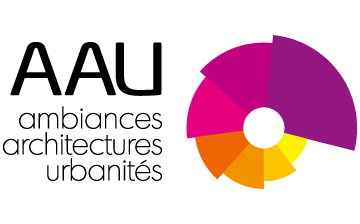Ecouter l’architecture : outils numériques et conception ambiantale, la piste du sonore renouvelée
Listening to Architecture : Digital tools and sound, new possibilities of design with « ambiances »
Théo Marchal - Thèse de doctorat soutenue en 2021
Encadrement : G. Chelkoff
Financement : ENSA Grenoble
FR
EN
This PhD thesis in architecture is part of the research on sensitive phenomena and lived environments conducted by the AAU laboratory and the CRESSON team for several years. More specifically, this work aims to study sound in space as a parameter of the physical environment and the quality of life in spaces. Thus, starting from the sound in space, we have attempted to broaden the questions raised by taking into account physical phenomena in order to include other considerations that are equally important for the quality of the spaces experienced – through the social link, the notion of intimacy, the relationship between close and distant perceptions or, more broadly, the issue of subjective experience, always in relation to the surrounding context.
Our aim is to test how sound can be an appropriate medium for a broader consideration of ambiences in architectural design by promoting a posture – literally and figuratively – for the designer. This provides the designer with a different relationship with the projected environment by shifting the focus.
The development of a digital tool and the questions that it raises will also lead us to consider the emergence of new digital design and evaluation tools in the environment of the spatial designer as a potential element for redefining the modes of project by renewing a reflection on the quality of the ambiences and the spaces experienced.
To this end, we have developed a software called « EsquisSons » to sketch the sound environment. It was tested through experiments in context, which took the form of workshops or involved experiments. This allowed us to explore and question the process of the architectural project from conception to evaluation through the prism of sound and the digital tool « in act » which translates into the following questions: How can sound be associated with one or more particular vectors of consideration of lived spaces beyond traditional quantitative acoustic evaluations? and : What can be the place and the potential of the digital tool in a perspective of considering ambiences in the architectural project?
We have chosen to answer these questions through the observation of three corpuses, all associated with the tool. The first corpus is the tool itself, and the aim is to analyse and explain its evolution from the beginning to the end of the research. The second corpus is based on the observations made during the workshops and the participants’ productions. The third and final corpus is composed of the other experiences that we were able to carry out with EsquisSons outside the workshops and that appeared to be relevant to support our observations.
The different phases of the tool’s construction, through questioning, improvements and additions, as well as the analysis of observations made during its use, allowed us to test our hypotheses and to show the potential, but also the limits of digital tools and sound for architectural design from a sensitive perspective.
